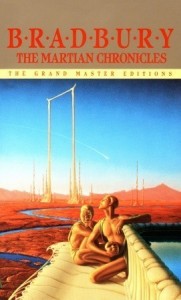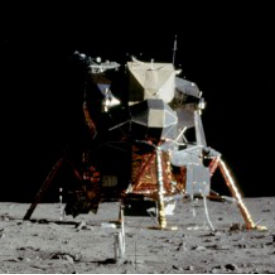 Science fiction is real, or at least it is getting closer to reality every day. If you step beyond the root definition of “fiction”, you can clearly see the evidence growing. The world the pillars of science fiction dreamed about a century ago is finally starting to take root in the present.
Science fiction is real, or at least it is getting closer to reality every day. If you step beyond the root definition of “fiction”, you can clearly see the evidence growing. The world the pillars of science fiction dreamed about a century ago is finally starting to take root in the present.
Many of the science fiction stories written during the Golden Age dealt with traveling into space, going to the Moon, Mars, and beyond. Classics like Have SpaceSuit–Will Travel by Robert A. Heinlein captured the dream of exploration beyond the confines of Earth.
In the early days of the last century, the idea of traveling into space was fantastic and magical, something only for the minds of daydreamers. Today, the notion of traveling into space has become so common that humans are already buying tickets for sightseeing tours in space. Mega-corporations are even pulling together their long-term plans of building luxury hotels that orbit the third planet from the sun.
 Ray Bradbury published The Martian Chronicles in 1950 documenting the colonization of Mars. Today, eager adventurers have signed up for the Mars One project, which promises to deliver colonists to the face of the fourth planet from the sun.
Ray Bradbury published The Martian Chronicles in 1950 documenting the colonization of Mars. Today, eager adventurers have signed up for the Mars One project, which promises to deliver colonists to the face of the fourth planet from the sun.
Mars will not be the first permanent colonization of space. The International Space Station claims that title. Orbiting around Earth, the space station offers a permanent apartment for scientists to hang out and enjoy the view. Just like any apartment building, the residents change from time to time, but make no mistake, it is a permanent colony.
Space exploration has gotten to the point that the solar system is starting to feel small. Robot selfies from Mars have become so commonplace that they barely register with the public. I keep checking them out hoping to catch a Martian photobombing the pics.
Further evidence that science fiction is real can be found in the drive-by snapshots of Pluto. The mysterious planet/not a planet/dwarf planet had before this month successfully eluded the paparazzi. A hundred years ago the news would have swallowed society’s imagination. Today the story flashes across the newsfeed just for a moment before it gets carried downstream by the latest weather report. Humans have adapted to this science fiction reality.

Amazing science has become mundane in many minds. Recently NASA’s Dawn spacecraft captured images of the dwarf planet Ceres. They were dumfounded to see bright shining objects on the surface. The bright spots remain unexplained, but if you compare them to photos of Earth, they look strikingly similar to bright cities.
The public barely noticed. If miraculously they do turn out to be cities inhabited by ancient humans or even aliens, how long would the public care? Would the news story last until the next election or the start of the World Cup?
The Golden Age of science fiction is long over, but perhaps we are living in the Golden Age of science. If scientific understanding can be compared to the growth of a child, perhaps we have finally grown up to be toddlers.
We are wobbling forward on a shaky base. We stub our toe from time to time, but we are slowly finding our legs. Imagine what the world and universe will be like when we finally learn to run.











Recent Comments